Previously: In the first two parts of our examination of THE AVENGERS, we explored the origin and roster of Earth’s Mightiest Heroes, and took a stroll through their decades-long history. This week, we’ll explore the glory that new (and not-so-new) blood brought to the book in the late ‘90s. So settle in, have Jarvis pour you a cup of tea, and we’ll begin…
In early 1998, Kurt Busiek and George Perez had some mighty big expectations to live up to. The disastrous HEROES REBORN gimmick had failed to set the world on fire (at least from a creative standpoint; opinions differ on the financial success of the experiment), and Marvel was pulling out all the stops to try to get readers to return to four of their oldest and most famous series, FANTASTIC FOUR, IRON MAN, CAPTAIN AMERICA and THE AVENGERS, after the former Image Comics creators Jim Lee and Rob Liefeld had had their way with them. Fan-favorite writer Peter David was enlisted to write a miniseries detailing the characters’ return to the Marvel Universe proper, and from there, Marvel hired some big-name, popular talent for each series. For THE AVENGERS, Marvel went with writer Kurt Busiek and artist George Perez.
Busiek had gained acclaim in the years prior to his AVENGERS debut with the hit miniseries MARVELS with painter Alex Ross, which took a look at the world of Marvel though the eyes of a photojournalist. Busiek followed that up with his much-acclaimed and award-winning series KURT BUSIEK’S ASTRO CITY in 1995. Perez, after ruling the world of DC comics in the mid-to-late ‘80s on books like THE NEW TEEN TITANS, CRISIS ON INFINITE EARTHS and his much-lauded revival of WONDER WOMAN (which Perez both wrote and drew), had gotten something of a reputation in the 1990s (unjustifiably, in my view) as being unable to keep to a monthly schedule. So expectations were high, and the pressure was on. What a relief it was, then, for both Marvel and AVENGERS fans alike, when in February 1998 Kurt and George knocked one out of the park with their first issue, AVENGERS Vol. 3, #1.
AVENGERS Vol. 3, #1 reunites every single Avenger still walking around the Marvel Universe (with several noted exceptions), who come together in reaction to attacks on former Avengers worldwide by creatures from Asgard and various otherworldly realms.
The original members head up the meeting of assembled Avengers, thirty-nine in all, and listen as Thor details the theft of the Twilight Sword, an Asgardian relic that can remake or destroy all of creation, if wielded by a being powerful enough. The Avengers are divided into squads, and set off around the globe in search of the Sword.
The sequence of the reunited Avengers convening at the Mansion is a standout. Busiek captures the personalities of the various Avengers exceptionally well, with his treatment of Hawkeye, Iron Man and Captain America being particularly keen. Starting here and continuing through the series (and later into Busiek’s other excellent Marvel series at the time, THUNDERBOLTS), Busiek portrays Hawkeye as a strong-willed, overly competent Avenger who’s fiercely proud of the team and his accomplishments within it, yet struggling with being merely a member again after having led the Los Angeles team for so long. Further, Busiek has enough trust in the talents of his collaborator that much of the characterization is portrayed through the art, such as in this sequence of the Avengers waiting to start the meeting, which concisely conveys the personalities and then-current moods and status quo of many of the characters, such as the Black Widow’s sense of failure, having been the person who disbanded the team previously, Hercules’ boisterous nature, and Spider-Man’s traditional lack of comfort in any sort of group environment:
It’s Captain America’s squad of Avengers that finds the sword, only to discover the hand behind the attacks: Arthurian sorceress Morgan Le Fay, who had staged the attacks to lure the Avengers to her, so she could claim her real prize, the Scarlet Witch, whose reality-warping powers allowed Morgan to use the Sword, and reshape the world in her own image, as we would see in AVENGERS Vol.3, #2.
In issue #2, “The Call,” we see Morgan’s remade Middle Ages-style world, with the Avengers recreated as Morgan’s personal guard, the Queen’s Vengeance. Busiek and Perez go to the trouble of redesigning every single Avenger as an Arthurian knight (in a cool note of continuity, Thor and Hercules, characters who actually lived in those times, simply remain in their traditional costumes). Captain America regains his memories first, thanks to some sorcerous prodding from the imprisoned Scarlet Witch, and goes about attempting to awake his fellow Avengers, starting, of course, with Hawkeye.
It turns out only those members with the strongest sense of being Avengers can wake up on their own, and soon Cap and Hawkeye have managed to return the Wasp, Captain Marvel, Quasar and Justice (who was never even a member and had tagged along on the mission with his NEW WARRIORS teammate Rage) to their normal selves, along with Thor, who also broke Morgan’s spell on his own.
Meanwhile, the Scarlet Witch’s continual sorcerous cries for help bear unexpected fruit: the resurrected Simon Williams, a.k.a. Wonder Man. As discussed last week, Simon had long harbored feelings for the Witch, but her marriage to his “brother” the Vision has forced him to keep his distance. Still, after Simon’s ionic form was destroyed by an alien ion cannon at the end of the WEST COAST AVENGERS run, it was revealed here that his love for Wanda kept his consciousness intact until her spell managed to recorporate him.
The Morgan storyline closed with a bang in issue #3, in which Morgan Le Fay, weakened by the Witch’s escape, finds herself contending with not only thirty-nine pissed-off Avengers, but also the returned Wonder Man, through whom the Scarlet Witch channels the strength and fury of the assembled Avengers, with explosive results.
In the end, both Morgan and Wonder Man are gone, the world has returned to normal, and the Avengers have a new, if much less pressing, problem on their hands:
The first part of the Busiek /Perez run focused on team dynamics, with Avengers newbies Justice and Firestar adjusting to their new responsibilities, Hawkeye straining against Cap’s leadership and Warbird struggling with alcoholism. Along the way, the Scarlet Witch continues to be able to resurrect Wonder Man when needed, both in battle and otherwise, causing tension between her and her ex-husband the Vision. The question of Wonder Man’s resurrection is settled in issues #10-11, in which Wonder Man’s brother the Grim Reaper takes control of Simon, and sends him and a squad of dead Avengers to attack the current team.
When the Witch realizes that it was Simon’s love for her that kept him together, she is finally able to reciprocate, and returns Wonder Man fully to the land of the living.
Meanwhile, Hawkeye leaves the team to lead the Thunderbolts, a renegade team of supervillains turned heroes (about whom we’ll talk more in a future column), and Warbird leaves the team in disgrace after several alcohol-induced errors in battle.
George Perez’s art on the series, particularly in the first two years, was some of the best of his career, rivaling even his outstanding work on NEW TITANS and CRISIS. Aside from his always first-rate draftsmanship, Perez began bringing some new innovations to the look of the series, such as stressing the Scarlet Witch’s gypsy roots with a new costume and slightly revised features, and incorporating visible circuitry into the Vision’s appearance when accessing his robotic abilities.
In addition, Perez’s facility with faces seemed stronger than ever. His women are gorgeous but all entirely unique; his cute, pixieish Wasp (who seems to have a Jennifer Aniston thing going on) looks nothing like his more exotic, slightly ethnic Scarlet Witch, neither of whom resemble Warbird, who has a more “blonde bombshell” look happening. Even more impressive is his ability to differentiate the male Avengers when unmasked. Since Captain America, Hawkeye and Hank Pym are all blue-eyed blonds, the easier route would be to always leave one of them masked. Instead, Perez consistently renders unique features for each, with Captain America having the classic if slightly bland good looks, Hawkeye looking more pugnacious and Hank Pym appearing more drawn and gaunt.
The Busiek/Perez team really hit its stride with issues #19-22, in the story entitled “Ultron Unlimited.” The Avengers are alerted to the return of Ultron, probably their most dangerous opponent, by the kidnapping of Hank Pym, founding Avenger and creator of Ultron. After a red herring leads them into battle with Alkhema, another indestructible robot created by Ultron as an intended bride, they discover that Ultron has returned, but to a degree of savagery and brutality they’d never before experienced. Ultron had slaughtered the entire population of the Baltic nation of Slorenia, and claimed the nation as his own.
While investigating the remains of the lab where Hank was kidnapped, the Wasp, the Vision, Scarlet Witch and Wonder Man are also kidnapped by a small army of Ultrons, all of his previously used and then discarded bodies (Ultron continually revises himself into new, upgraded bodies. Think of it as, say, Ultron 12.0). When the kidnapped Avengers come to in Ultron’s base in Slorenia, they learn of Ultron’s plan. Ultron, who’s always been obsessed with family, plans to record their brain patterns and use them as the basis for his own new robotic race, mixing and recombining them countless times to create scores of new minds for his “children,” And who better to use for raw material than his human family: his “parents” in Hank Pym and the Wasp, his “son” the Vision, and his son’s own kin, the Scarlet Witch and Wonder Man.
Meanwhile, the Avengers are leading a battalion of UN troops into Slorenia. Captain America, Iron Man, Thor, Firestar and the Black Panther have their hands full defeating merely one Ultron, and make a startling realization:
Soon, the Avengers are facing wave after wave of Ultrons, slowly slogging their way toward the true Ultron’s headquarters. Tortured by guilt, Hank Pym is caught up in his own struggles, as he confesses to the Wasp that he originally used his own brain patterns to create Ultron’s mind, and has felt personally responsible for all of Ultron’s atrocities. This revelation not only makes perfect sense in terms of Hank’s character, it also helps retroactively explain much of Pym’s mental problems over the course of the series. Kudos here to Busiek for an elegant story twist that actually strengthens past stories.
Thanks to the Vision, the kidnapped Avengers break free and are about to attack, when Ultron receives another courtesy call, in what’s probably my favorite moment from the entire series:
Thanks to last-minute intervention by Justice and some long overdue heroics from Hank Pym, soon it’s all over, as a giant-sized Pym literally pounds Ultron out of existence.
Like much of the Busiek AVENGERS run, ULTRON UNLIMITED is available in trade paperback, and worth your hard-earned cash.
Busiek and Perez followed up the Ultron saga in issue # 23 with a one-issue examination of the relationship between Wonder Man and Vision, and what it really means to share “brain patterns.” Here, Kurt Busiek again displays his remarkable ability to take previously told storylines and plot points and refocus them into a new emotional dynamic which doesn’t at all invalidate the stories that came before, as we learn how the Vision and Wonder Man each secretly envy the other.
By issue #27, the roster had been completely revised, with only the Scarlet Witch and Iron Man remaining, and Goliath, the Wasp, Warbird and She-Hulk returning to active status, alongside new member Triathlon, an acrobatic martial artist, whose membership is pressured by the Avengers’ government liaison Duane Freeman, in the face of mounting public protests about the Avengers’ lack of minority membership – protests which Iron Man suspects may have been engineered by the Triune Understanding, a quasi-religious self-empowerment cult that helped Triathlon gain his superhuman abilities.
While the new team is interesting, it doesn’t have the same vibrancy as the series’ first two years did. Still, these are still some solid, entertaining adventure comics, with plenty of the character interplay that you expect from THE AVENGERS, and the antagonism between Triathlon and the rest of the team makes for some enjoyable tension.
With issue #34, George Perez’ tenure as AVENGERS artist came to an end, with the series taking on a noticeable shift in focus after that. As of issue #38, the team is reorganized into a global peacekeeping force, with nearly every active, inactive and reserve member pressed into service.
This new approach starts out with an excellent three-parter by Busiek and new artist Alan Davis involving a small community in Greece whose entire population have been transformed into Hulks. Davis’ appealing and slightly cartoony art serves as an excellent alternative to Perez’s hyper-realism, and there’s a certain geeky satisfaction to be found in seeing Captain America and the Wasp organize and coordinate a worldwide network of Avengers. What’s good for three issues, however, might not be so good for seventeen…
In issue #41, Kurt Busiek embarked upon his mammoth “The Kang Dynasty” storyline, which would carry the series through three artists and Busiek’s departure from the series in #56. Massively ambitious in scope, the storyline features the return of Kang the Conqueror, this time with his son the Scarlet Centurion, and his plans for global conquest thanks to the power of his massive sword-shaped spacecraft, Damocles Base. Also along for the ride is an obscure Alpha Flight villain, The Master, massive armies of Deviants and Atlanteans, the resolution of the Triune Understanding storyline from the first two years of the series, oh, and a few Sentinels thrown in for good measure. As ambitious and epic as the story was intended to be, it was ultimately less than successful.
The first problem was the pacing. Despite Kang’s declaration of the conquest at the beginning of the storyline, four issues went by before the Avengers bothered to do anything about it, in the meantime going on other adventures and even enjoying some downtime, all after the complete destruction of the United Nations by Kang. Then, once the story got going, it dragged on for what seemed like an interminable amount of issues. Busiek had a lot of ideas and plot twists he wanted to include, but it’s just too long, and with too many characters to really engage the reader. Also, once the entire membership was made active, it was if there was no longer any time for characterization. Much of the appeal of the book is the interaction and conflicts between members, and with a membership of over 35 spread all over the planet, that simply wasn’t in the cards. Only with the storyline’s epilogue do we get a sense of the camaraderie and fellowship that is usually a trademark of the series, and by that point, after over a year of grim, grim, and more grim, it was too little, too late.
Finally, the story was a victim of massively poor timing. The lynchpin of the entire story was meant to be the destruction of Washington, D.C., by Kang, prompting the surrender of the Avengers (and Earth) by Avengers co-leader the Wasp. Unfortunately, two months before the issue saw print, the tragic events of September 11 took place, and after seeing an all-too-real act of mass murder unfold before the eyes of the world, this story felt at best inappropriate and worst, downright offensive. I know for me personally, it cast a pall over the storyline that I was never able to recover from as a reader, and even re-reading it now with years of distance, it’s still not an enjoyable read. I certainly don’t fault Busiek and company for the storyline. At that point, they were over halfway through a story they’d been planning for over two years; certainly too late to scrap it and start again.
Not helping the matter was the somewhat average art of Manuel Garcia and Kieron Dwyer. To be fair, following up George Perez and Alan Davis isn’t the easiest job in comics, but Garcia’s workmanlike pencils weren’t very inspiring, and Dwyer’s new scratchier style (whose art I loved back in the day on CAPTAIN AMERICA) just was not a good fit for the series. Unfortunately, a bit of a subdued curtain call for such an amazing run of AVENGERS comics.

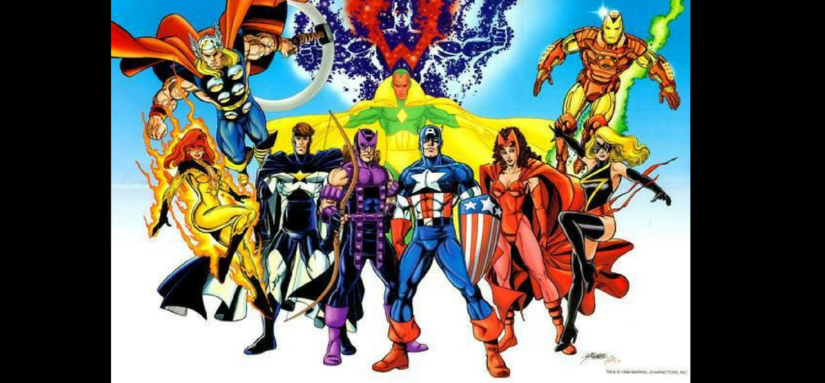
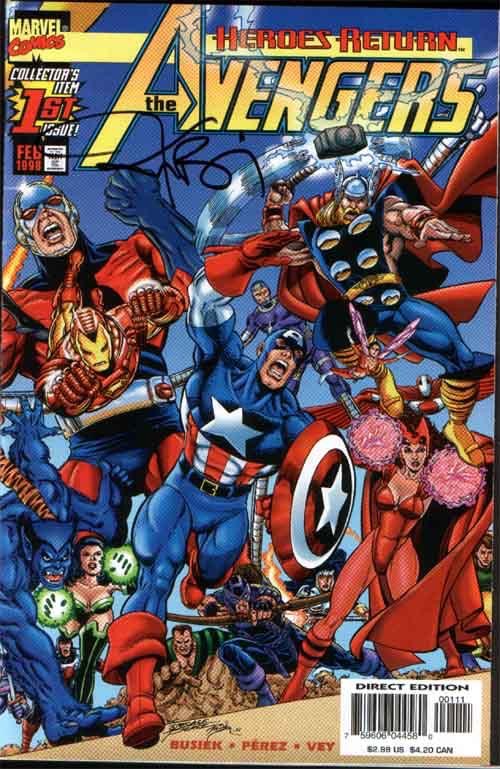

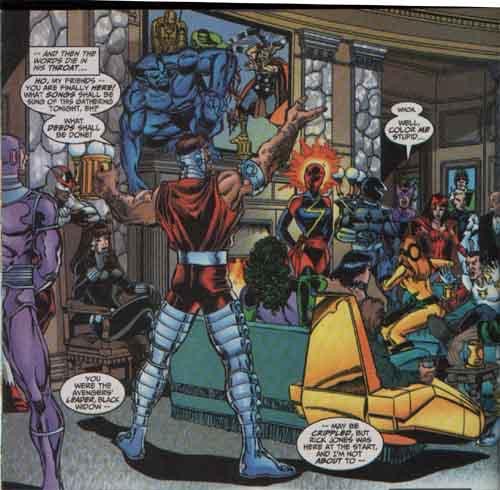
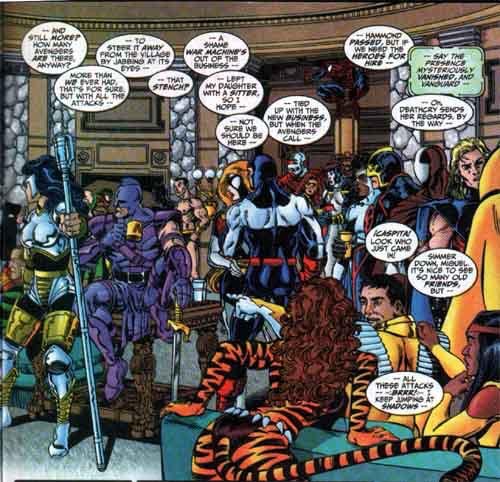
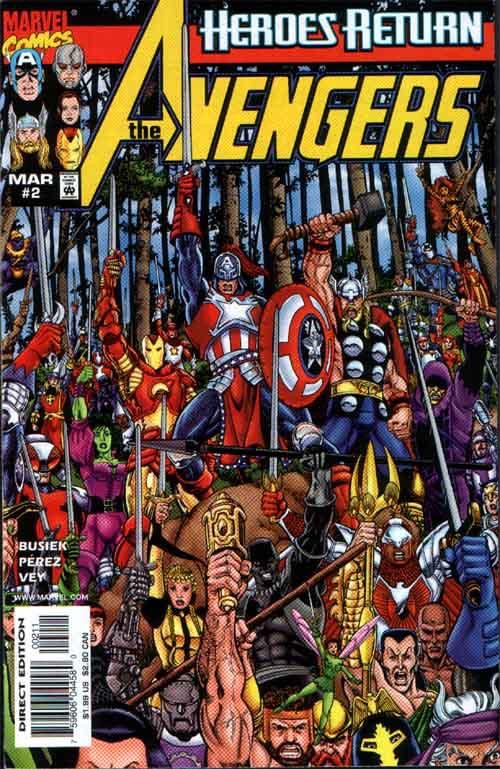
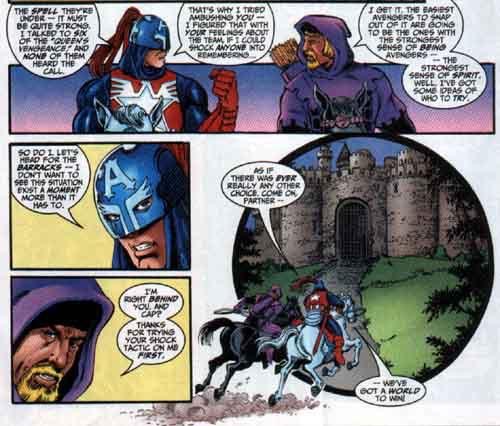
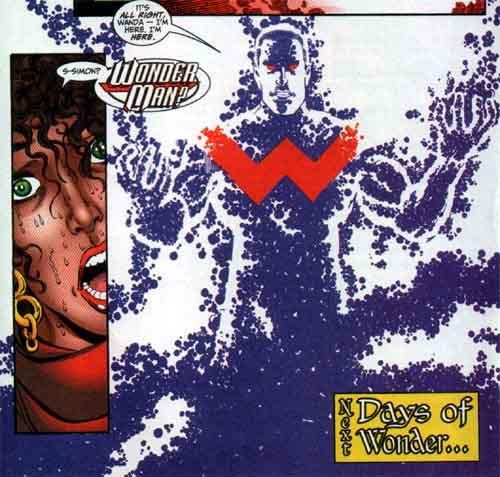
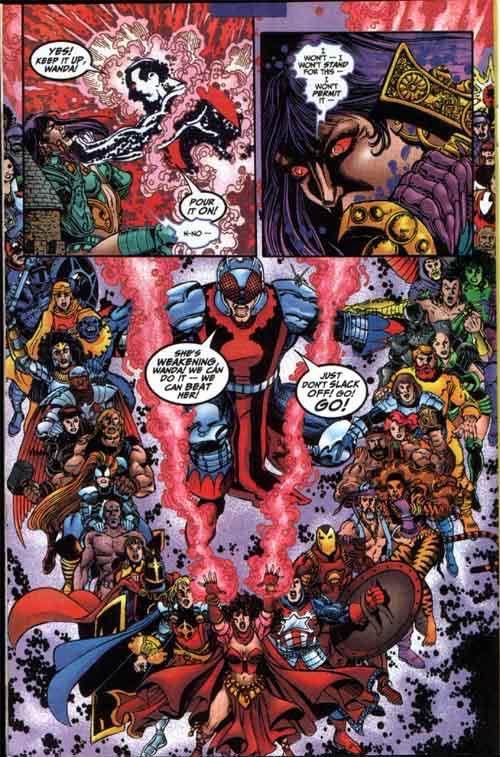
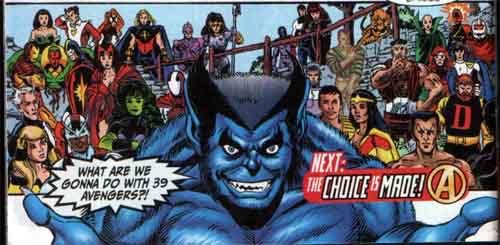


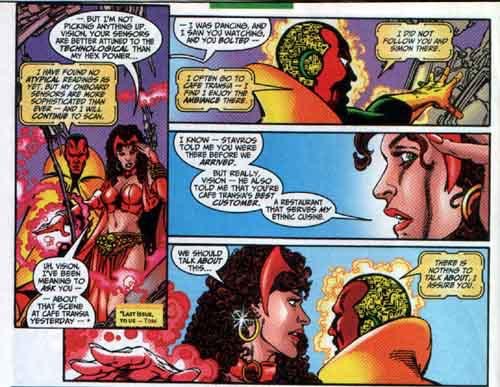
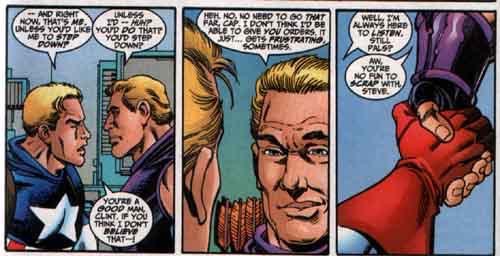
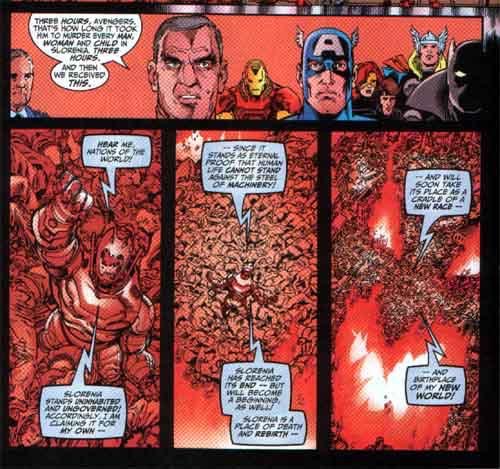

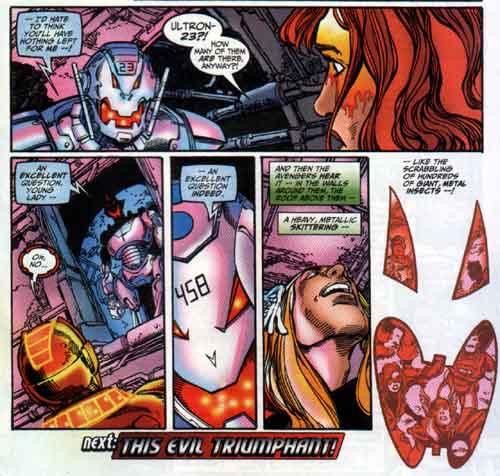
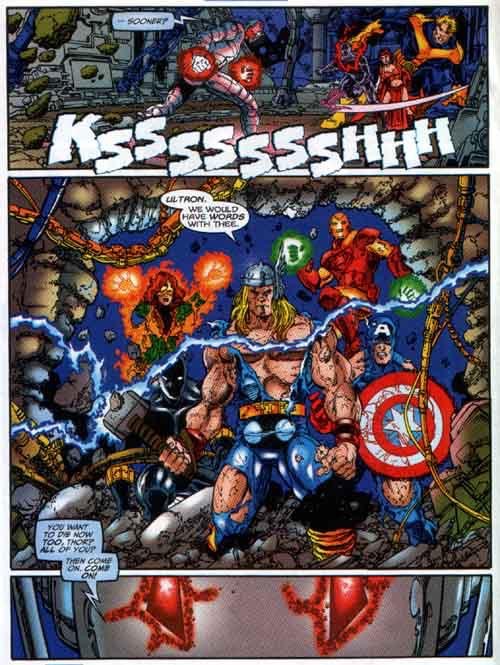
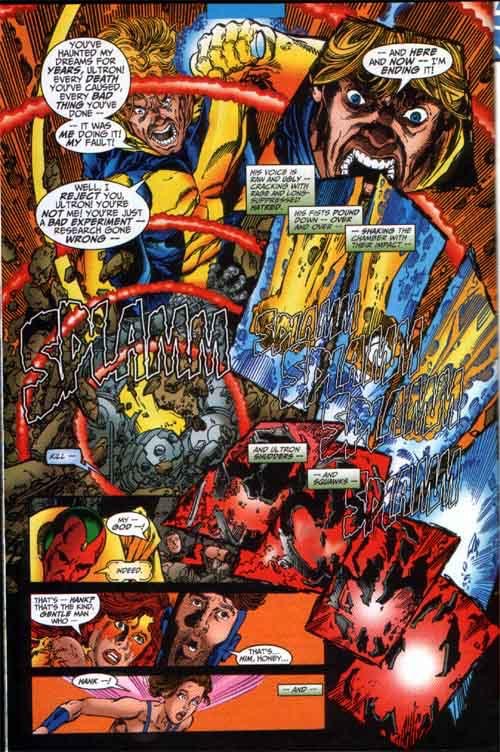
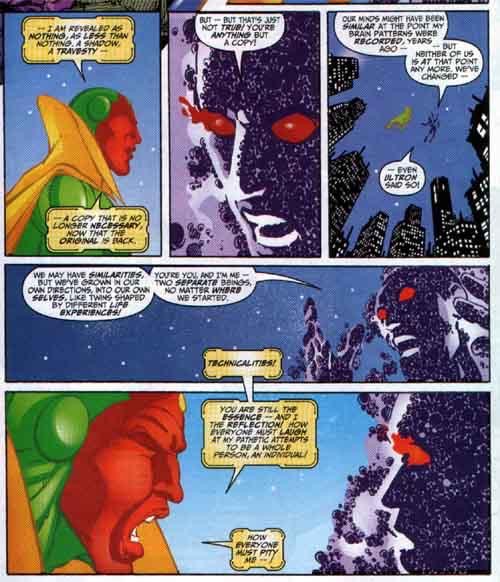
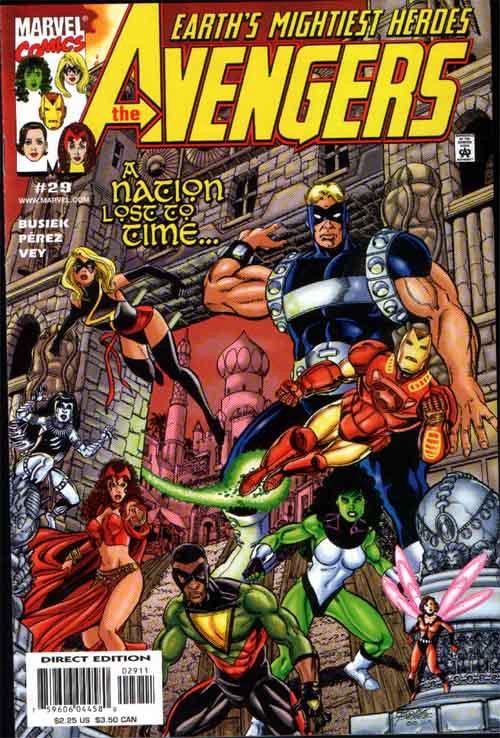
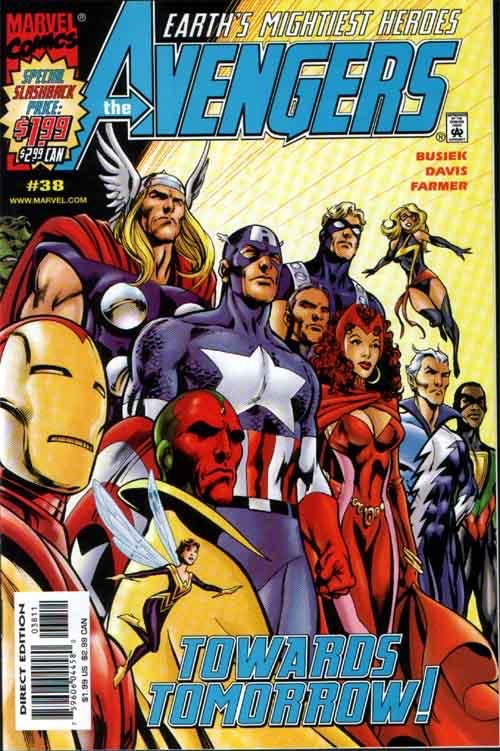

Oddly enough I’ve alyaws had an affinity for Vision BECAUSE of the red, yellow and green combination (and find the white one… no good) – we truly are mirror opposites!I got this set for the characters and ’cause the Hawkeye is awesome (especially the arrow/bow connectivity feature) but both Vision’s seemed to short-change the costume/character/figure with it’s translucency. However, the 2.0 looks much more solid, and therefore better than I expected – does look the same in person, or more see-through-y?